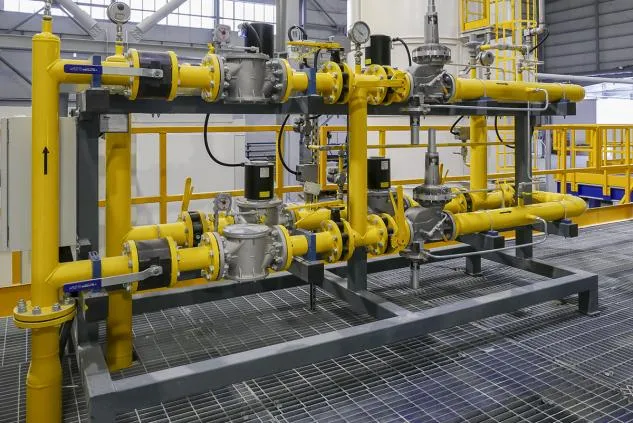- Industrial zone, South of Anping Town, Hengshui, Hebei, China.
- sales@hfpetromesh.com
- +86-18931809706
 Afrikaans
Afrikaans  Albanian
Albanian  Amharic
Amharic  Arabic
Arabic  Armenian
Armenian  Azerbaijani
Azerbaijani  Basque
Basque  Belarusian
Belarusian  Bengali
Bengali  Bosnian
Bosnian  Bulgarian
Bulgarian  Catalan
Catalan  Cebuano
Cebuano  Corsican
Corsican  Croatian
Croatian  Czech
Czech  Danish
Danish  Dutch
Dutch  English
English  Esperanto
Esperanto  Estonian
Estonian  Finnish
Finnish  French
French  Frisian
Frisian  Galician
Galician  Georgian
Georgian  German
German  Greek
Greek  Gujarati
Gujarati  Haitian Creole
Haitian Creole  hausa
hausa  hawaiian
hawaiian  Hebrew
Hebrew  Hindi
Hindi  Miao
Miao  Hungarian
Hungarian  Icelandic
Icelandic  igbo
igbo  Indonesian
Indonesian  irish
irish  Italian
Italian  Japanese
Japanese  Javanese
Javanese  Kannada
Kannada  kazakh
kazakh  Khmer
Khmer  Rwandese
Rwandese  Korean
Korean  Kurdish
Kurdish  Kyrgyz
Kyrgyz  Lao
Lao  Latin
Latin  Latvian
Latvian  Lithuanian
Lithuanian  Luxembourgish
Luxembourgish  Macedonian
Macedonian  Malgashi
Malgashi  Malay
Malay  Malayalam
Malayalam  Maltese
Maltese  Maori
Maori  Marathi
Marathi  Mongolian
Mongolian  Myanmar
Myanmar  Nepali
Nepali  Norwegian
Norwegian  Norwegian
Norwegian  Occitan
Occitan  Pashto
Pashto  Persian
Persian  Polish
Polish  Portuguese
Portuguese  Punjabi
Punjabi  Romanian
Romanian  Russian
Russian  Samoan
Samoan  Scottish Gaelic
Scottish Gaelic  Serbian
Serbian  Sesotho
Sesotho  Shona
Shona  Sindhi
Sindhi  Sinhala
Sinhala  Slovak
Slovak  Slovenian
Slovenian  Somali
Somali  Spanish
Spanish  Sundanese
Sundanese  Swahili
Swahili  Swedish
Swedish  Tagalog
Tagalog  Tajik
Tajik  Tamil
Tamil  Tatar
Tatar  Telugu
Telugu  Thai
Thai  Turkish
Turkish  Turkmen
Turkmen  Ukrainian
Ukrainian  Urdu
Urdu  Uighur
Uighur  Uzbek
Uzbek  Vietnamese
Vietnamese  Welsh
Welsh  Bantu
Bantu  Yiddish
Yiddish  Yoruba
Yoruba  Zulu
Zulu
- Afrikaans
- Albanian
- Amharic
- Arabic
- Armenian
- Azerbaijani
- Basque
- Belarusian
- Bengali
- Bosnian
- Bulgarian
- Catalan
- Cebuano
- Corsican
- Croatian
- Czech
- Danish
- Dutch
- English
- Esperanto
- Estonian
- Finnish
- French
- Frisian
- Galician
- Georgian
- German
- Greek
- Gujarati
- Haitian Creole
- hausa
- hawaiian
- Hebrew
- Hindi
- Miao
- Hungarian
- Icelandic
- igbo
- Indonesian
- irish
- Italian
- Japanese
- Javanese
- Kannada
- kazakh
- Khmer
- Rwandese
- Korean
- Kurdish
- Kyrgyz
- Lao
- Latin
- Latvian
- Lithuanian
- Luxembourgish
- Macedonian
- Malgashi
- Malay
- Malayalam
- Maltese
- Maori
- Marathi
- Mongolian
- Myanmar
- Nepali
- Norwegian
- Norwegian
- Occitan
- Pashto
- Persian
- Polish
- Portuguese
- Punjabi
- Romanian
- Russian
- Samoan
- Scottish Gaelic
- Serbian
- Sesotho
- Shona
- Sindhi
- Sinhala
- Slovak
- Slovenian
- Somali
- Spanish
- Sundanese
- Swahili
- Swedish
- Tagalog
- Tajik
- Tamil
- Tatar
- Telugu
- Thai
- Turkish
- Turkmen
- Ukrainian
- Urdu
- Uighur
- Uzbek
- Vietnamese
- Welsh
- Bantu
- Yiddish
- Yoruba
- Zulu
jan . 13, 2025 13:22
Back to list
heavy-duty welded bar grating
Understanding the True Cost of Stainless Steel Bar Grating An Expert Insight
Industry demand and market volatility are external factors that can affect prices. The stainless steel industry is susceptible to price fluctuations in raw materials like nickel and chromium. Economic variables, trade policies, and global supply chain constraints further contribute to cost variations. Staying abreast of market trends by following authoritative industry reports can help buyers anticipate and adapt to these changes. When considering price, it’s important also to account for supplementary services like installation, coating, and maintenance. An appropriate non-slip coating, for example, can increase safety but adds to the overall cost. Likewise, professional installation ensures longevity and performance, albeit with additional charges. Lastly, sourcing grating from reputable manufacturers or distributors is crucial for ensuring quality and cost-effectiveness. Established companies with a track record of reliability provide assurance of product performance, adherence to industry standards, and competitive pricing. Building a relationship with trustworthy suppliers can facilitate negotiations, enable volume discounts, and secure after-sales support. In conclusion, understanding the price dynamics of stainless steel bar grating involves more than just evaluating upfront costs. It requires an in-depth assessment of material specifications, manufacturing techniques, market conditions, and service offerings. By considering these factors, buyers can not only optimize their investment but also enhance the operational safety and efficiency of their projects. Consulting with industry experts is highly recommended to navigate these considerations effectively, ensuring informed decision-making rooted in experience and expertise.


Industry demand and market volatility are external factors that can affect prices. The stainless steel industry is susceptible to price fluctuations in raw materials like nickel and chromium. Economic variables, trade policies, and global supply chain constraints further contribute to cost variations. Staying abreast of market trends by following authoritative industry reports can help buyers anticipate and adapt to these changes. When considering price, it’s important also to account for supplementary services like installation, coating, and maintenance. An appropriate non-slip coating, for example, can increase safety but adds to the overall cost. Likewise, professional installation ensures longevity and performance, albeit with additional charges. Lastly, sourcing grating from reputable manufacturers or distributors is crucial for ensuring quality and cost-effectiveness. Established companies with a track record of reliability provide assurance of product performance, adherence to industry standards, and competitive pricing. Building a relationship with trustworthy suppliers can facilitate negotiations, enable volume discounts, and secure after-sales support. In conclusion, understanding the price dynamics of stainless steel bar grating involves more than just evaluating upfront costs. It requires an in-depth assessment of material specifications, manufacturing techniques, market conditions, and service offerings. By considering these factors, buyers can not only optimize their investment but also enhance the operational safety and efficiency of their projects. Consulting with industry experts is highly recommended to navigate these considerations effectively, ensuring informed decision-making rooted in experience and expertise.
Share
Next:
Latest news
-
Why Our Shaker Screen for Sale Stands Out in Every ApplicationNewsAug.08,2025
-
Unmatched Efficiency with Premium Shale Shaker Screen TechnologyNewsAug.08,2025
-
Reliable, Durable, and Cost-Effective: Press Locked Steel Grating SolutionsNewsAug.08,2025
-
Precision Strength with Welded Steel Bar GratingNewsAug.08,2025
-
Perimeter Safety Netting: The High-Strength Shield for Elevated Safety SolutionsNewsAug.08,2025
-
Maximize Performance with Steel Walkway GratingNewsAug.08,2025